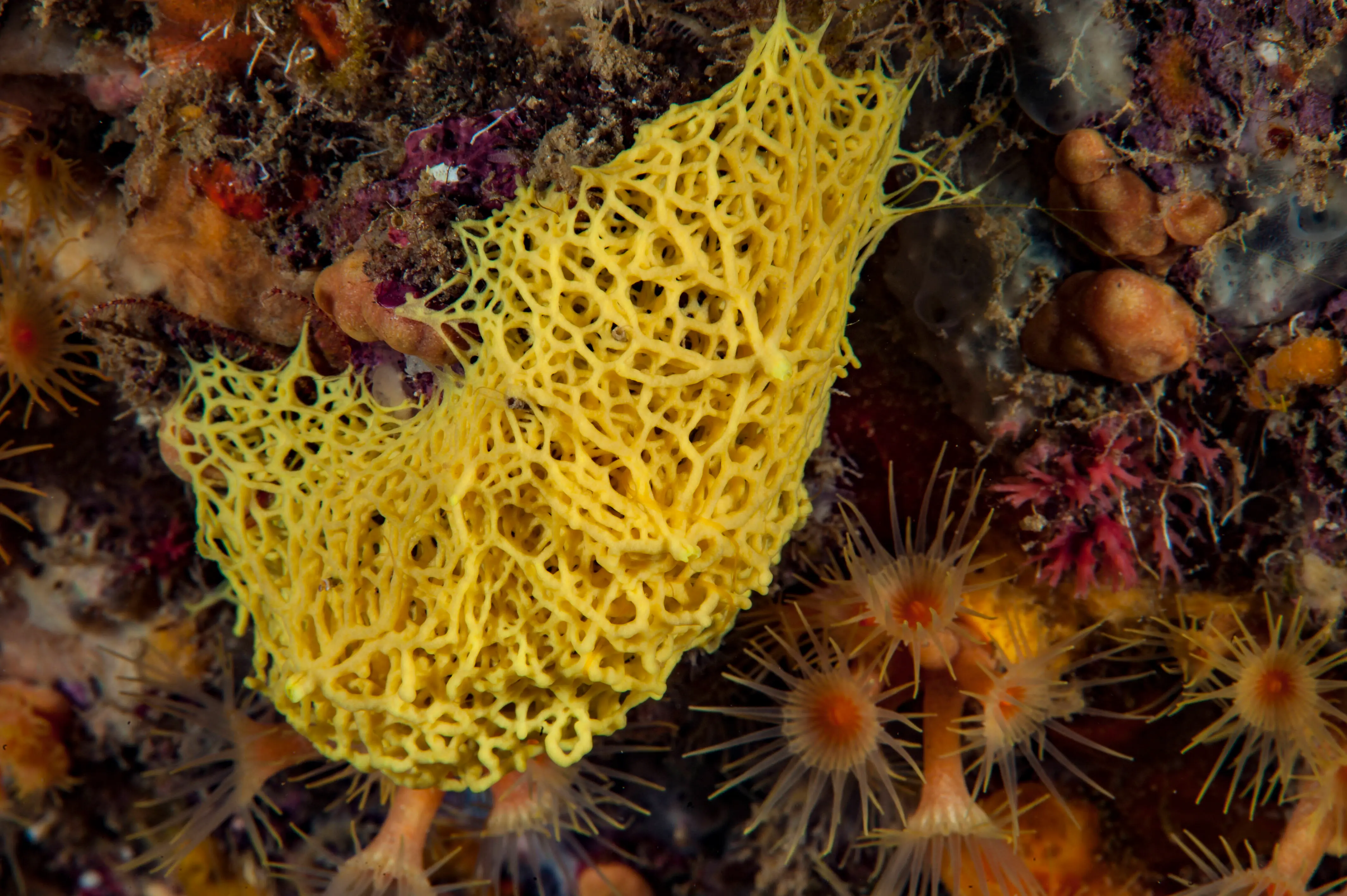Carnivorous ‘death ball’ sponge and other new species discovered deep in the Pacific Ocean, scientists confirm
-
 LA CIOTAT - FRANCE - JUNE 23: a sea sponge called yellow clathrina (Clathrina clathus), on june 23, 2016 in La Ciotat, France. The Mediterranean represents a hotspot of marine biodiversity. With only 1% of the world's oceans and seas, it is home to nearly 10% of the world's marine species. There are also hundreds of endemic species. (Photo by Alexis Rosenfeld/Getty Images).
LA CIOTAT - FRANCE - JUNE 23: a sea sponge called yellow clathrina (Clathrina clathus), on june 23, 2016 in La Ciotat, France. The Mediterranean represents a hotspot of marine biodiversity. With only 1% of the world's oceans and seas, it is home to nearly 10% of the world's marine species. There are also hundreds of endemic species. (Photo by Alexis Rosenfeld/Getty Images).Scientists exploring the deep Pacific Ocean have discovered several new sea creatures, including a carnivorous sponge that eats small animals. The sponge has been nicknamed the “death ball” because of its round shape and unusual feeding habits.
The discovery was made by a team from the Monterey Bay Aquarium Research Institute (MBARI) along with other researchers. They used underwater robots to explore the ocean floor more than 3,000 meters deep, where sunlight never reaches.
Meet the ‘death ball’ sponge
Most sponges feed by filtering tiny food particles from the water. But the “death ball” sponge is different — it traps and digests small creatures like shrimp and crustaceans.
Scientists say the sponge has tiny hook-like structures that act like Velcro, catching animals that drift too close. Once trapped, the sponge slowly absorbs nutrients from its prey.
This feeding method is rare and has only been seen in a few other sponge species. The new sponge is special because of its perfectly round shape and its ability to survive in the cold, high-pressure depths of the sea.
More new species found
The research team also found several other new species, including deep-sea worms, corals, and sea stars. Many of these creatures live on rocky underwater mountains, known as seamounts.
Some of the new animals had bright colours or glowing patterns, while others had strange shapes to help them survive where food and oxygen are scarce.
Scientists say these discoveries show that there is still so much we don’t know about the deep ocean. Despite all our technology, most of the ocean floor remains unexplored.
Why the discovery matters
Finding new deep-sea species helps scientists understand how marine life adapts to extreme environments. It also gives clues about how the ocean reacts to climate change and human activity, such as deep-sea mining.
Researchers believe some of these new creatures could also be important for medicine or biotechnology in the future, as deep-sea species often produce unique chemical compounds.
Dr. Lonny Lundsten from MBARI said, “Every time we go deeper, we find something new. It reminds us that we’ve only seen a small part of life on our planet.”
How scientists made the discovery
The team used remotely operated vehicles (ROVs) — underwater robots fitted with cameras and sensors — to explore the ocean floor. These robots sent live video back to the scientists on the ship above, who watched and guided them through the deep.
They collected samples of the new species so researchers can study them in labs. It will take time to confirm and name each species officially.
This discovery is another reminder of how mysterious the ocean still is. Scientists estimate that more than 80% of the ocean has never been explored.
Every new expedition brings surprises — and often, animals that look and behave like nothing found on land.
The “death ball” sponge and other new deep-sea species show that life can exist even in the darkest, coldest parts of the planet. And while humans have mapped the Moon and Mars in detail, much of our own ocean remains a mystery waiting to be explored.
TOPICS: Death Ball Sponge